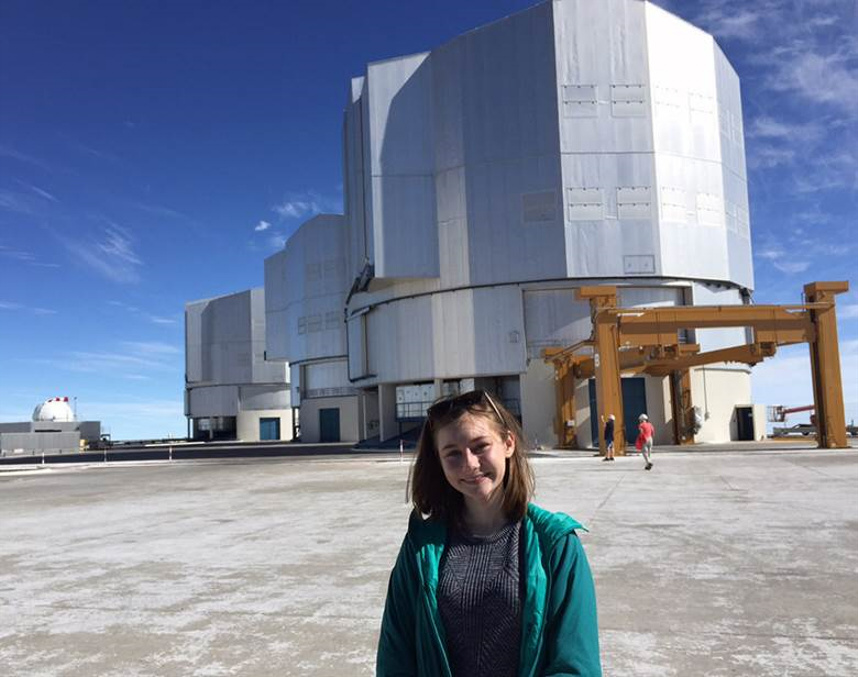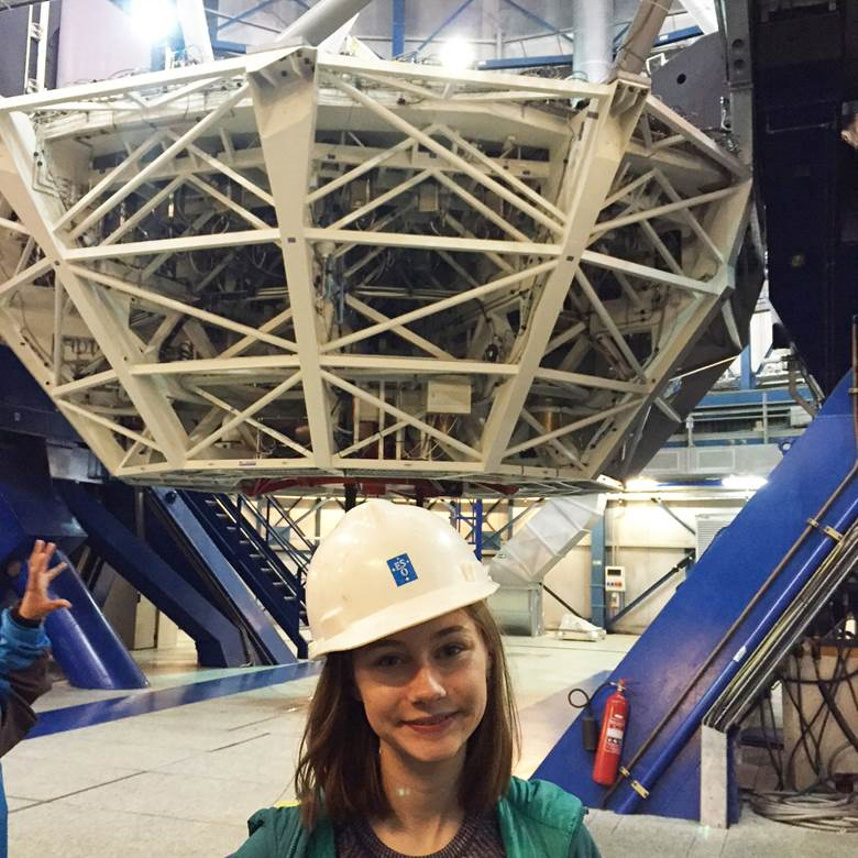
My Visits to Paranal Observatory and Cerro Tololo Inter-American Observatory in Chile
Paranal
The first observatory my dad and I visited during our trip to Chile was the Paranal Observatory, which bills itself as the most advanced visible light observatory in the world. Located 120 kilometers south of Antofagasta, Chile at an altitude of 2,635 meters, the Paranal Observatory is home to the European Southern Observatory’s Very Large Telescope array, which is composed of four 8.3 meter “Unit” telescopes and four Auxiliary telescopes. The European Extremely Large Telescope, which is currently under construction on a nearby peak, will have an enormous 40 meter segmented primary mirror when it is completed in 2024.
When my dad and I visited the Paranal Observatory, we were shown one of the four 8.2 meter Unit telescopes and its operation. Our guided tour included a description of the active optics system that uses a series of mechanical actuators to apply pressure to several dozen points on the back of each primary mirror to allow the mirror to maintain an ideal shape throughout an imaging session, as well as a description of how light gathered by the multiple telescopes in the array is carefully routed through a complex series of underground tunnels and then combined to form the ESO Very Large Telescope Interferometer. This system is an engineering marvel, because for the VLT Interferometer to work, the light paths from each telescope must be kept equal in distance to within 1/1000 of a millimeter as they travel hundreds of meters. We were able to see the workspaces of several astronomers as they were analyzing data. We watched a video that explained the projects currently underway at Paranal, including the new array being built on a nearby peak. We also toured part of the living quarters for visiting astronomers and staff, which served as a set for a fictional desert hotel that was destroyed in the climactic scene in the 2008 James Bond movie Quantum of Solace. Currently, foundations are being built for additional, smaller telescopes that will be integrated into the VLT Interferometer. Once this project is completed, the array is expected to produce infrared images with improved angular resolution. Here are a few photos from our visit to Paranal:

Behind me you can see three of the four domes at Paranal Observatory that house the matching 8.2 meter “Unit” telescopes.

This is the massive primary mirror cell for one of the 8.3 meter “Unit” telescopes at Paranal. Several of the almond-colored rectangles that house the actuators for the active optics system are visible near the top of the photo.
For more information, here is the link to the Paranal Observatory main page:
Link to Paranal Observatory main page
Cerro Tololo
We also visited the Cerro Tololo Inter-American Observatory, located near the small town of Vicuña in Chile. This site is part of the National Optical Astronomy Observatory, which also manages Kitt Peak National Observatory near Tuscon, Arizona. During our tour, our guide rotated the domes for the 1.5 meter and 4 meter telescopes and gave a terrific presentation. On August 9, 2015, 90,000 acres in the Elqui Valley of northern Chile, including Cerro Tololo and three other nearby observatory sites, were designated as the first International Dark Sky “Sanctuary” in the world. Unfortunately, tour groups like ours are only allowed to visit Cerro Tololo and Paranal during daytime hours, so I am left to imagine what the night sky looks like from there.

Me in front of the main observatory dome at Cerro Tololo.
Next: Continue to Easter Island Visit
Copyright 2025 StarlingSkyBlog